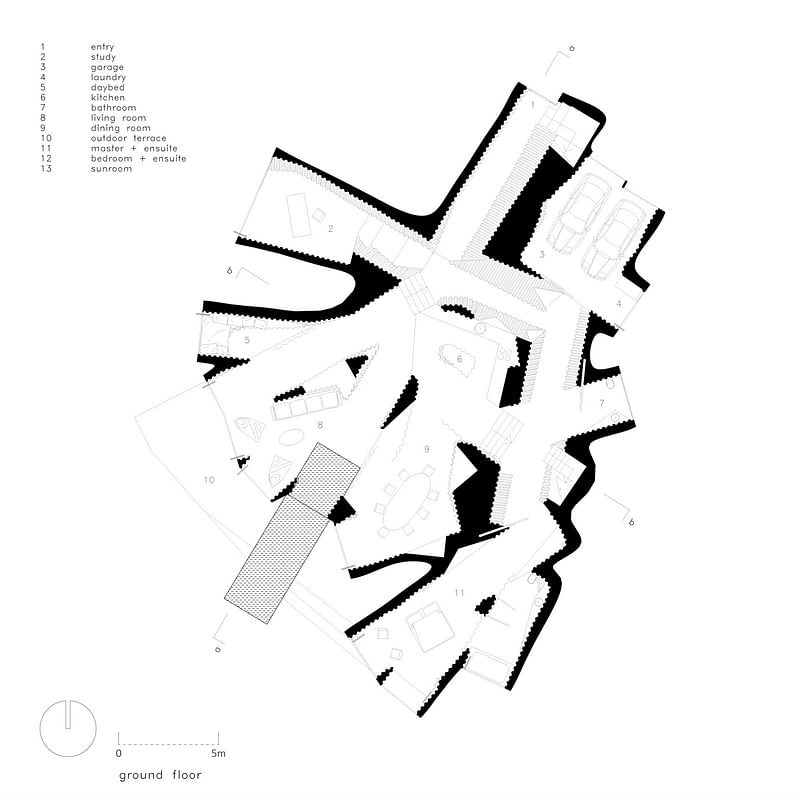Results of the [SYDNEY] Container Vacation House competition
By Bustler Editors|
Wednesday, Dec 4, 2013

Related
[AC-CA] recently announced the results of their [SYDNEY] Container Vacation House competition. Entrants had to design a waterfront vacation house on Bondi Beach in Sydney, Australia using only a freight container.
Although the Container House won't be built, the competition served as an exploration of small-scale design innovation and the possibilities of reusing freight containers as housing units.
Out of 307 proposals, the jury chose three winners:
- 1st prize (US$3,500): Ales Javurek, Czech Republic
- 2nd prize (US$1,700): Eunjin Koh and Jonghyun Kim, South Korea
- 3rd prize (US$800): Andrew Nicolle and James Moulder, Australia
Seven projects also received honorable mentions.
First prize: Ales Javurek
Country: Czech Republic
Team type: Architect
Project description: "One of my priorities was to keep current trees, amount of lawn and slope's profile consisting three platforms. As a result, I created parking space on the highest level, separated from the house by existing trees, container vacation house on the middle level and swimming-pool area on the lowest part. Green lawn is moved to the roof, creating really private garden with stunning view. The house's construction is created by horizontal wooden slabs which are supported by slight columns. Containers define spaces (public/private or main/supporting) in each storey."

"This sustainable house also works with climate and seasons. During summertime, wooden pergolas protect interior from the sun, green roof prevents overheating and natural ventilation provides movement of fresh air. In the winter, glazed surfaces enable to get solar benefits, green roof keeps warmth inside and internal spaces create simple box which is easy to heat."

"Building's program is distributed on two storeys where ground floor is open and more public and first floor remains private. All spaces are organised according to their function and are united to comprehensive groups. I believe that internal connection between spaces and users' circulation is absolutely essential issue. That is why I provided clear, straight connection between platforms with barrier - free entrance and corridors which are orthogonal to main axis."

Second prize: Eunjin Koh and Jonghyun Kim
Country: South Korea
Team type: Architect
Project description: "This house, located at the end of the hill, creates an illusion that it would be a cave made of cut rocks. The idea began with the roof structure built on where earth is skimmed. Then necessary programs hang inside it. The roof open its arms to the sea depending on slope and landscape. The containers, which are lightly afloat, also face the sea."

"The most important interest was to secure an independent space for the owner of the house. It is why we hung the containers on the roof, not on the ground. It is like several containers share the top space to make a house. Each part of the roof has different slopes, so we could naturally secure a deep space for terrace. This space (terrace) will be used for the owner and his friends in drying surfing boards under sunlight or keeping them when they come back from fun in Bondai beach."

"While the upper part of the house is used independently, the lower part is connected to a space for everyone. Although for common use, it is divided into recreational space (for party) and LDK (for resting). The recreation space naturally leads to a swimming pool and LDK to terrace garden. This house looks as if it was built on the residential space on dug ground."

"This house will be used by the owner and his friends who love surfing. Each of them can not only occupy his own container but also command the view of the sea on different level according to the height of the roof. That is why they (containers) become unique. Since the containers hang on it in prefabricated way, they can replaced later if needed."

Third prize: "Concrete Anamnesis" by Andrew Nicolle and James Moulder
Country: Australia
Team type: Student
Project description: "Our concept proposal, Concrete Anamesis, builds upon, yet is vastly different to ideas associated with container housing. Starting with damaged containers, no longer suitable for use in shipping and destined for the scrap yard, the Bondi vacation house gives purpose to these containers, using their damaged panels as formwork for the house."

"The damaged containers are organised on site according to the programmatic brief of the house and in order to best capture views, natural breezes and daylight. The intersection of these containers creates void spaces which, when cast in concrete, become solid forms."

"The concept of memory centers on the notion that memory takes place in space; it is related to both a temporal sense and a spatial experience. The cast form of the containers reflects the spatial experience, while at the same time those very deformations that shape the physical form also hold permanent an event in time, reflecting the temporal sense."

"Concrete Anamnesis uses a sustainable concrete sprayed onto the deformed container formwork. Consisting of highly insulative Liapor high quality expanded clay as aggregate and using new technology that replaces cement with crushed waste glass, the cement has an estimated embodied C02 of less than 30kg/tonne. This concrete mixture results in low embodied energy building material, suitable to the exposed and harsh conditions of the site upon the headland."

Images courtesy of [AC-CA].
Click the thumbnails below to see all honorable mentions.








Share
0 Comments
Comment as :